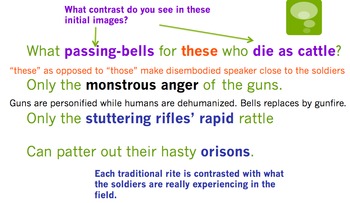

The first stanza of ‘Anthem for Doomed Youth’ continues in the pattern of a pitched battle, as though it were being written during the Pushover the trenches.

In ‘Anthem for Doomed Youth,’ Owen makes no secret of the fact that he believes the war is a horrific waste of human life. Owen made no secret that he was a great critic of the war his criticism of pro-war poets has been immortalized in poems such as Dulce et Decorum Est, and in letters where Wilfred Owen wrote home.

‘Anthem for Doomed Youth’ opens, as do many of Owen’s poems, with a note of righteous anger: what passing-bells for those who die as cattle? The use of the word ‘cattle’ in the opening line sets the tone and the mood for the rest of it – it dehumanizes the soldiers much in the same way that Owen sees the war dehumanizing the soldiers, bringing up imagery of violence and unnecessary slaughter. The shrill, demented choirs of wailing shells Īnd bugles calling for them from sad shires. Nor any voice of mourning save the choirs, What passing-bells for these who die as cattle? This poem also draws quite heavily on Wilfred Owen’s love of poetry. It was Siegfried Sassoon who gave the poem the title ‘Anthem’. The first part of the poem takes place during a pitched battle, whereas the second part of the poem is far more abstract and happens outside the war, calling back to the idea of the people waiting at home to hear about their loved ones. Written in sonnet form, ‘Anthem for Doomed Youth’ serves as a dual rejection: both of the brutality of war, and of religion.


 0 kommentar(er)
0 kommentar(er)
